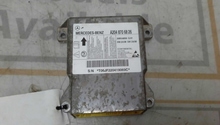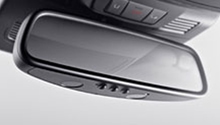Mercedes-Benz C-Class: How to Correct Trouble Code P2138
Is your Mercedes-Benz C-Class suffering of P2138 problems? Is it also suffering of hesitation upon acceleration, a lack of power, and idling problems? Continue reading as there is something you should know about it.
This article applies to the Mercedes Benz C-Class w204/w205 (2007-Present).
The days are long gone where most of the components under the hood of your Mercedes-Benz are controlled manually. However, this transition to electronically-controlled components isn't necessarily a bad thing. Before, a simple cable was used to open and close the throttle plate. Now, the throttle is controlled by a throttle position sensor (TPS). Installed on all modern cars, including your C-Class, this sensor detects signals from other components of the engine to control emissions, enhance fuel economy, as well as the transmission and throttle response of your car. These signals, as well as the signal from the gas pedal of your car, are sent to the engine control unit (ECU) of your Mercedes-Benz C-Class w204 or w205, which then measures and delivers the optimal air/fuel mixture for efficient performance of the engine. Because of modern electronic components, the ease of finding a problem with your car is easily determined through Diagnostic Trouble Codes (DTC), such as that P2138 error code on your OBD-II scanner. This error code correlates to a malfunction with the TPS, signaling you that the problem must be fixed.

Material Needed
- OBD-II scan tool
Most electronic components can be fixed through a software update, or by re-tuning the ECU. And if that doesn't work, simply replace the part to resolve the problem. Such is the case for the error code P2138. If your throttle sensor is off, you could floor the throttle, but the sensor may only detect 20% throttle input. The result is lack of engine response and acceleration, as well as idle issues. Listed here are the steps to reset the TPS in your C-Class in hopes that the problem will be fixed. If the problem persists, it is recommended replacing the TPS, or taking your vehicle to the dealership for proper repair.
Step 1 – Manually set the ignition
To initiate the TPS reset procedure, first you must sit in the driver's seat with the door closed. Remove the Start/Stop KEYLESS GO button, and place your key in the ignition switch. Turn it one click to the right. This should start up the battery, but should not start the engine.

Step 2 – Depress the pedal
Step on the gas pedal all the way to the bottom (full throttle), and hold it for a minimum of five seconds. At five seconds flip the key to the "OFF" position with the pedal still depressed. Then, release the pedal. Make sure not to remove the key, or the TPS reset procedure will need to be restarted.
Step 3 – Let the ECU reset
Wait a minimum of two minutes for the ECU to reset itself. During this time, the calibration mechanism of the TPS should reset, and send the correct throttle plate as well as pedal positions to the ECU. Test drive the car to make sure the issue has been resolved. If it has not, the TPS will most likely need to be replaced.
Related Discussions
- Mercedes-Benz Common Sensor Malfunctions- MBWorld.org
- P2138 TPS Error Code on W205 C-Class - MBWorld.org






